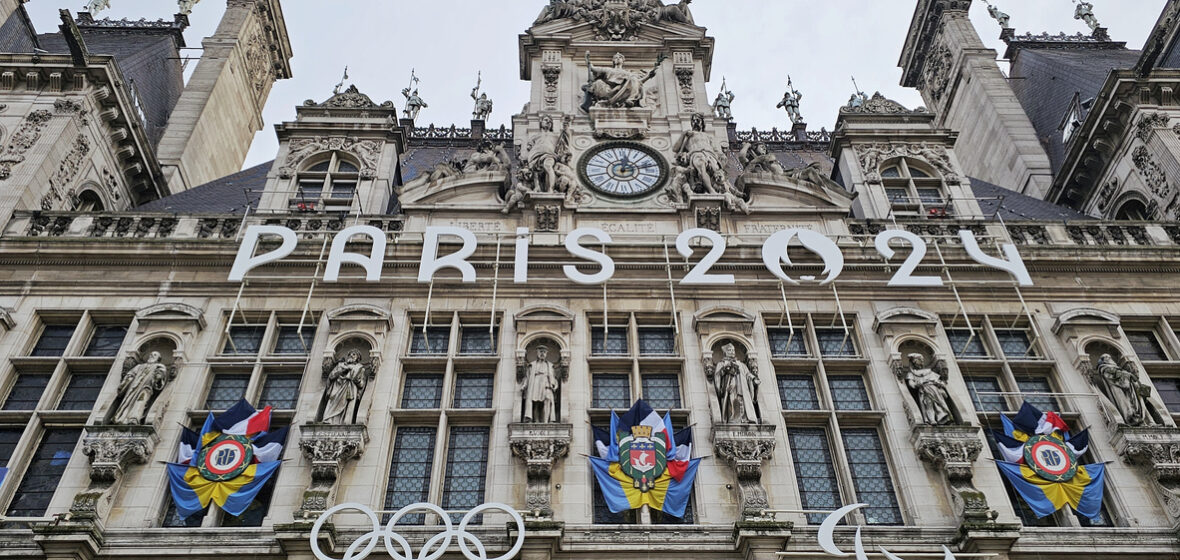Last month, French prosecutors opened an investigation into an online harassment complaint made by Olympic boxing gold medallist Imane Khelif according to the Paris-based Office for the Fight against Crimes against Humanity and Hate Crime.
The charges are “cyber harassment based on gender, public insults based on gender, public incitement to discrimination and public insults on the basis of origin.” Khelif’s complaint, which includes Elon Musk and author J.K Rowling for very public, derogatory comments relating to Khelif’s gender, cites “aggravated cyber-harassment” in what her lawyer, Nabil Boudi, described as a “misogynist, racist and sexist campaign.”
The Algerian boxer had been the victim of relentless bullying and false accusations about her gender and her eligibility to compete as a woman. When the IOC official in charge of safeguarding and mental health, Kirsty Burrows, spoke up in Khelif’s defence during a Paris news conference, she received online death threats and harassment, leading Burrows to also file a complaint with the Paris prosecutor’s office on 4 August.
While some on social media have been quick to critique Khelif, her body, and her gender, and to spread disinformation, international sporting organisations have also engaged in gender discriminatory behaviour in sport for nearly a century. Though banned by the Olympics, the Russian-backed International Boxing Association disqualified Khelif and Taiwanese boxer Lin Yu-ting from the world championships in 2023, based upon unvalidated eligibility tests for women’s competition that the IOC has called “irretrievably flawed”.
Experts in women, sports and discrimination have pointed out the disproportionate number of Black and Asian women targeted by arbitrary gender tests owing to their bodies not conforming to a narrow stereotype of white, female athletic form. South African runner Mokgadi Caster Semenya faced disqualification following hormone testing. Like Khelif, Semenya was born female, raised as a girl and has been legally identified as female her entire life. Indian sprinter Dutee Chand was eliminated from the Commonwealth Games in 2014 for elevated testosterone, resulting in rounds of gender testing, and tennis great Serena Williams also faced scrutiny of her body, her hormones and gender throughout her lengthy career.
International principles of sports participation
In 2021, the IOC released a 10-principle approach on gender and sex inclusion that recognised the need for a “safe, harassment-free environment”. Likewise, Australian sporting organisations have also released guidelines that hark back to the sporting principles of inclusion, equal opportunity, anti-discrimination and diversity in professional sport.
Going back to the 1940s, “femininity certificates” were issued to women by doctors after visual inspections of women’s nude bodies, invasive physical “inspections”, and hormone testing. It stripped women athletes of their dignity, and the tests yielded questionable results. Transgender athletes have faced the same discriminatory behaviour, which led the Australian Institute of Sport, governed by the Australian Sports Commission, to release official guidelines in June 2023 that prioritise inclusion as fundamental within high-performance sports.
Robin Banks AO is a Post-Doctoral Fellow at the University of Tasmania, Faculty of Law – Centre for Law and Genetics. She’s also a member of the Australian Discrimination Law Experts Group. From 2010 to 2017, Bank was Tasmania’s Anti-Discrimination Commissioner, and previously held the position of CEO of the Public Interest Advocacy Centre in NSW, and Director of the Public Interest Law Clearing House in NSW.
She tells LSJ that in regard to inclusive participation policies, sporting bodies “need to be very careful to make rules that are sustainable, that the evidence is there to support the rules they make.”
In an interview with NPR during the final week of August, American Paralympian swimmer Jamal Hill said, “we all essentially have the same struggle and challenge and that is to make the best of what we’ve got. Some people are smaller, some people are taller, some people are stronger, some people have one leg, and some people like me have both legs that create a good amount of drag, but we still just have to overcome.”
He added, “It’s human nature, nobody wants to be different and sometimes we tend to look at people who are different as ‘less than’.”
Banks reiterates the same sentiment when it comes to gender diversity and the public and sporting world’s attitude towards people who do not fit a narrow archetype of what a male or female athlete looks like and is capable of. She points to the federal discrimination laws – the Sex Discrimination Act 1984 (Cth) – and the state and territory-based laws as providing a protection against people being rejected by grassroots sporting clubs. At an elite level, limitations remain on the accessibility of elite careers for those whose do not comply with the conditions on strength, stamina or physique.
Banks points out these factors are vague, and elite athletes are inherently exceptional in their physical capacities. To define their capacity according to gender expectations is “a tricky test” she says.
According to section 42 of the Act, Banks says, [that] “nothing in Division 1 or 2 renders it unlawful to discriminate on the ground of sex, gender identity or intersex status by excluding persons from participation in any competitive sporting activity in which the strength, stamina or physique of competitors is relevant.”
Banks says, “In terms of ‘strength stamina or physique’, that’s important because some things might require stamina, but not a particular physique, or a particular level of strength. So, running in a marathon, for example, is an interesting question because what scientific evidence is there that women have less stamina than men in running 42 miles in a marathon? They may not be able to run it as fast, but are they less able to run it in terms of stamina? Stamina is a much more vague term than strength is.”
Natural skill versus narrow expectations
Banks adds physique is a relevant consideration in elite sports, but determining physique based on gender alone is flawed.
“When you think about gymnastics, and all sorts of different sports, where your physique can make an enormous difference, this provision allowed you to exclude people on the basis of sex or gender. So, we would never say that Ian Thorpe shouldn’t compete in the Olympics because he’s got much bigger feet than anybody else,” she says.
“That’s a physique benefit, and it’s the nature of elite sport that people do have physiological benefits. Most people who are elite sports come to it with an innate physiological benefit of some sort.”
There is a patchwork of loopholes and exceptions, which may present a challenge for sports participants and sporting organisations to navigate. For example, while it is unlawful for a club, a club’s management committee or individual members of a club’s management committee, to discriminate against an applicant for membership of a club, or an existing member, based on their sex or gender identity, in relation to certain activities, the discrimination provisions regarding club membership only apply to sporting clubs and organisations that meet the definition of ‘club’ under the Act.
As the Australian Sports Commission states, “For clubs that do not meet the ‘club’ definition, the Act will usually still be applicable by way of the ‘provision of goods, services and facilities’ section. However, if a sporting organisation is a ‘voluntary body’ under the Act and not a ‘club’ it will be exempt from the key anti-discrimination provisions of the Act.”
Looking to world sports bodies
Banks says, “If the IOC or the World Athletic Federation says: ‘this is the rule for competition around gender’, that’s the rule that should apply to elite sport in Australia and also to those that are the channel to elite sport. That’s not always the case. The AFL has had some controversy around their rules in relation to gender, for example.”
In November 2021, the IOC released the Framework on Fairness, Inclusion and Non-Discrimination on the Basis of Gender Identity and Sex Variations.
The official IOC position statement on fairness and gender inclusivity notes that “the Framework recognises the need for separate women’s and men’s categories in elite sports. It also acknowledges the significance of fair competition opportunities for the women’s category, given the historical and contemporary struggle for gender equality in sport.
“The Framework does not preclude the possibility that certain individual athletes could be subject to participation restrictions or exclusions where an unfair and disproportionate advantage and/or unacceptable safety risk is clearly demonstrated and cannot be mitigated via reasonable accommodations.”
Under the framework, prevention of harm requires:
“The physical, psychological and mental well-being of athletes should be prioritised when establishing eligibility criteria”, and “Sports organisations should identify and prevent negative direct and indirect impacts on athletes’ health and well-being that may come from the design, implementation and/or interpretation of eligibility criteria.”
Harassment, bullying and abuse and the onus on prevention of harm
According to a formal IOC position statement, “The IOC is committed to ensuring that all athletes within the Olympic Movement can practise sport in safe environments that positively support their health and well-being and are free from harassment and abuse.”
This is where Khelif’s complaint and legal case have focused their investigation and potential prosecution: not on eligibility and discrimination, but cyberbullying and harassment.
The harassment she has faced is familiar. US tennis player Serena Williams, and South African runner Caster Semenya also faced gender-based disparagement by media and the public over their bodies.
“I think there is a much greater willingness to question bodies that already in some way or other, whether it’s skin colour or cultural background, in a way that we don’t with European Anglo women in elite sports,” Banks says.
“We cannot make policies based on fearmongering and politics. What is vital is the importance of being able to participate in community activities, and if we marginalise people through sport, we marginalise people in an important part of Australian cultural life. We should look at international federations in elite sports, and Australia should be forming views based on the IOC and international sports federations which are looking to the scientific evidence.”
In Australia, Banks expects to see “more refinement of those defences in discrimination law, because they are still pretty crude defences.”
“They don’t take account of the fact that some people just are naturally better at things than others, and some people are not as good. A person who’s transitioned from being a male post-puberty might want to swim against me and they might or might not be as good as me. That’s the nature of human diversity.”




